The ups and downs in the oil and gas market are inevitable. But you can control how you prepare for the unpredictability and ensure your operations are optimized for every condition. And leveraging the right technology—starting with the right network infrastructure—can enable operators to make a paradigm shift away from traditionally manual, disintegrated oil and gas processes.
Take, for example, a typical scenario in today’s oilfields.
Operators must manage remote wells across hundreds of square miles of rugged terrain. Wellheads are equipped with flowmeters and other devices to measure and log data on pressure, pump function, and more, but the information is only accessible at each physical wellhead location, with no link back to the central command center, which means techs must drive out to each well site, each week—traveling to remote locations with little means for the command center to monitor their safety along the way. The techs must manually collect the data from the wellhead sensors and bring it back for evaluation.
So much time elapses before the data even reaches the command center that when issues are identified, it’s already too late. Any problems revealed have likely been causing inefficiencies for days or even weeks. Even one pump operating at less than optimal performance could be costing the company thousands of gallons in missed oil extraction and production.
Worse yet, if during these huge gaps in visibility a well runs dry, it could cause the downhole pump to burn up, which means significant expense in equipment replacement, not to mention the associated downtime costs. And technicians have to be dispatched yet again to the remote wellhead location for corrective action.
Not only is this process entirely reactive and extremely labor-intensive, it’s very costly.
It’s time to change the story on operational efficiency, to capitalize on these waiting productivity gains. Rajant Kinetic Mesh® technology makes this possible.
Easily deployable across large-scale oilfields, the network nodes are engineered to ensure wireless connectivity is simple, instantaneous, and fail-proof in extreme oil and gas environments. Install the BreadCrumbs® on equipment, vehicles, and technician devices—then activate the crucial link between these business-critical field assets and your central operations center. The BreadCrumbs rapidly self-configure to route high-bandwidth data, voice, and video applications plus ensures your sensitive information remains highly secure as it travels.
Now you can also monitor any number of well conditions in real-time to instantly identify brewing issues before they cause expensive downtime or production delays while optimizing every aspect of your oilfield operations.
In addition, real-time access to this array of data not only allows you to proactively monitor performance in the field, but gives you the insight to predict costly failure before it occurs. Operators can immediately dispatch technicians for service, arming them with the information they need to ensure a first-time fix and send these techs out with confidence, knowing their safety can be much more closely managed. The network also enables real-time visibility into all personnel location and status, keeping them continuously connected to the command center no matter where they travel to significantly accelerate safety response times.
The result?
Techs are safer, and their time is reallocated to value-generating tasks. Operators can implement a predictive maintenance model to keep equipment optimized, and the organization can maximize the speed and volume of oil extraction at every well—all at a lower cost. Additionally, you’ll be poised to capitalize on the promises of the fully integrated digital oilfield and power a mobile mesh broadband network that moves and evolves with your connectivity demands. 🖉













